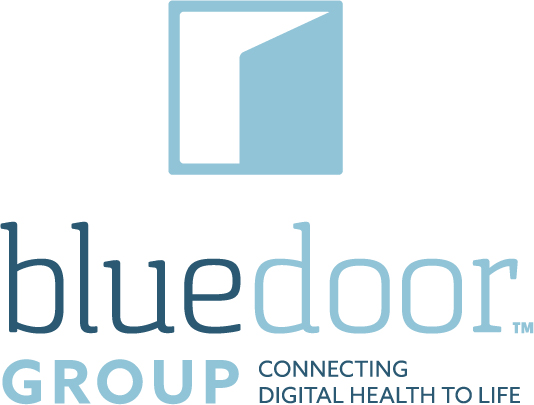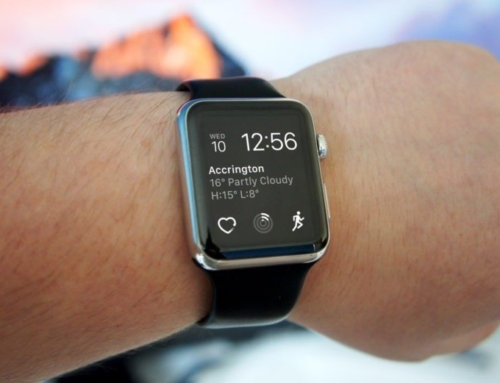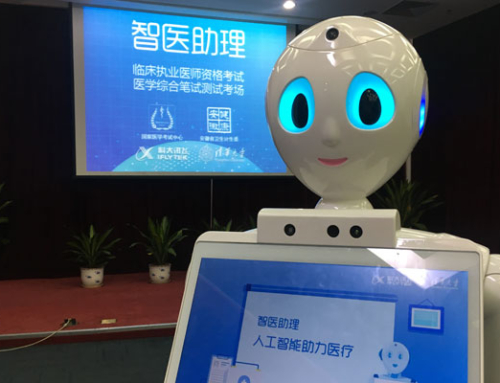By Heather Landi | Oct 18, 2017
There is much discussion in the healthcare industry about the potential for digital health innovation to transform healthcare delivery, and healthcare providers are beginning to deploy digital tools to better understand and serve their patients.
However, this convergence of healthcare and technology presents many challenges for hospital and health system executive leaders as they look to effectively leverage digital health and integrate it into clinical workflow. Michael Levy serves as the entrepreneur-in-residence on the clinical faculty at UNC Health Care System, based in Chapel Hill, N.C., and he is working to guide the health system’s digital health strategy. Levy also is co-founder and CEO of Bluedoor, a Chapel Hill-based digital health startup that works to connect healthcare with entrepreneurs and digital health partners to promote product development. Levy is a healthcare executive turned entrepreneur who specializes in culture transformation and operations. Prior to co-founding Bluedoor, he was co-founder and COO of Digital Therapy, a cognitive computing company in the behavioral health space. He also has held leadership roles at a number of health systems, including the University of Miami Health System and UCLA Health.
Levy will join other healthcare IT leaders to discuss forward-thinking patient engagement through technology, and other health IT topics, during the Health IT Summit in Raleigh, sponsored by Healthcare Informatics, held October 19 and 20. Levy spoke with Healthcare InformaticsAssociate Editor Heather Landi about his work at UNC Health Care and his forecast for digital health in the patient care environment.
What is the entrepreneur-in-residence position at UNC Health Care?
For the health care system and the school of medicine and under the UNC Health Care System’s Center for Health Innovation, the position was created for me to sit in a bridged role where I can bring the external ecosystem within the Triangle and beyond to UNC’s doorstep, and UNC can engage with the internal ecosystem together, in an open innovation environment. It’s bringing digital health to the table in the ways of discovering problems, evaluating needs and designing and developing solutions, digitally. And, essentially, it’s bringing those stakeholders together, both from the outside and the inside, with a level of regularity to produce an engine, if you will, that starts with cultivating the ecosystem and advancing ideas through a vetting process to get to some executable digital health solutions, ultimately. And those digital health solutions could be internally implemented and deployed throughout the healthcare system, or spun out in a commercial environment or done with research studies around it.

What are you focused on right now at UNC Health Care?
I think there’s a two-pronged approach here. One, how do you improve the experience of care delivery within a system and, and then, how do you engage with patients in their life flow outside the system? There are opportunities scattered across both environments where technology can enable new ways of providing value from an experience and engagement perspective. At UNC Health Care, we’re looking at the care continuum, from a patient perspective and each step along the process of receiving care through various service lines and various condition-specific instances, and saying ‘Where can we use and leverage technology to bring a more overall engaging experience?’ We are looking at it from an access perspective—how can we leverage price transparency tools? How can we reach the patient where they are, like retailers and financial institutions do—leveraging social media, leveraging chat bot technologies, how do we bring the conversation to the patient, through various modes of communication that can only be enabled through digital means?
And then we get into a system and it’s about, what can we do from a pre-procedure perspective? How can we deliver educational materials in a digestible manner, in bite-sized chunks over time, instead of giving the patient a 40-page manual of flat text? So, we’re constantly challenging each step of the process and looking at where we can apply technology. And then, how do we string that together to create a cohesive experience for the patient, from staying in their lives, in their homes and in their communities, to coming into the system; a system that has historically been very arduous, complex and unflattering, in respects to the level of experience that one receives. We’re just really trying to dissect the ecosystem, as best as possible, and look at ways to apply technology to enable the interactions.
Can you give examples of using technology to engage patients outside the hospital?
Whether you are a provider system or a payer or whomever is caring for the individual, the name of the game is how do you engage in passive monitoring and how do you engage in passive insights delivery such that you never ask a patient to not live his or her life? And so, it’s wearables from the Fitbits and Apple Watches, to Band-Aids and patches, to hearing aids, to eyeglasses, to RFID tags. It’s all a way of tracking new measurements that we could not do before and to add to the composite data sets that we have within our EMRs [electronic medical records], within our claims database, with our registries and bring that together to actually contextualize who it is that we are trying to treat—and that will allow us to be proactive with treating each individual as an individual. These are probably the most outward-touching technologies in the physical tracker, wearable space that are commercially available, but on the R&D side of this, it’s absolutely tremendous with what we see from injestibles and trackers that are five to 10 years away from being commercially available.
What is the progress of your work right now at UNC Health Care?
There’s this idea of ‘crawl, walk, run,’ and most systems are in the crawl stage with digital health. How do we actually collect the patient-reported outcomes, the data that exists outside of the clinical space? And, when we do get it, what do we do with it, how do we analyze it, how do we embed it in clinical care? This is where we are; as an overarching strategy, we think and strategize a lot in the future, in respects to where we need to be, and what we believe the future of digital health and health care delivery convergence looks like. But we’re really in the awareness period right now. It’s just figuring out what to do with all this new data, and how to engage with technologies that are popping up left and right in the external space. UNC found it important to bring me on board both to help build the digital health program and transform UNC into a very adaptive institution from that perspective, but also to bring some level of standard and consistency to how we look at external technologies and what we focus on now, versus later.
What are some of the biggest challenges facing the digital health industry?
There are a number of challenges. I think aligning incentives is probably the biggest challenge. Who pays for it, who uses it and who needs to engage with the digital solution? Many times, the value is in the delivery of the solution, but who pays for it? That is a big question. And how does the vendor who developed it, generally a startup, derive revenue to keep its solution and its business growing and evolving, and build its commercial strength? We’re still in the early days in aligning that incentive model. And, of course, from a provider implementation perspective, if it doesn’t integrate into the provider workflow, you’re not going to get provider adoption, and so, it’s a moot point before you even question the revenue model or the funds flow model of the solution that you’re trying to launch and deploy as well.
What is your forecast for digital health technologies in the patient care environment?
I think we’re going to start to see massive impact starting around 2025. I think that’s a safe year for me to say, eight years out, can we realign our incentives, can we build the regulatory framework to handle digital health? Can we make movement in interoperability? And, can we culturally transform ourselves into a society that understands the value of digital health, adopts it, promotes it, from a practice and policy perspective, in the right way, and in an accelerated fashion, strategically, for the long term? That’s ultimately what’s going to lead to the transformation to exist. But, naturally, you’re going to have constant pressure from outside of the traditional healthcare system, in respects to doing it faster, cheaper and better. But, what’s true is that the healthcare system as we know it, the acute care intervention-heavy setting, there is a place for it, always. I believe there’s going to be this bifurcation that’s going to take shape where you have the acute intervention-heavy care setting, like we have in the hospital environment, and then you have the chronic care, longitudinal behavior health model that is more digitally-enabled to manage long-term relationship building over time with these patients. It’s going to look differently in respects to those two systems.
What should C-suite executive leaders at healthcare provider organizations be focused on right now?
I think the biggest risk is not to take a serious look at your investment in a digital health program. Those systems that understand digital health’s complexities, the various stakeholders that need to be at the table, and the competencies that need to be internally inhabited, will be the ones who succeed. These are not regular norms in healthcare, in respects to an agile entrepreneurial mindset; this is digital health. It’s going to be a very difficult challenge for hospitals that are behind in the digital health transformation process to catch up to those who execute against a strong digital health strategy.










